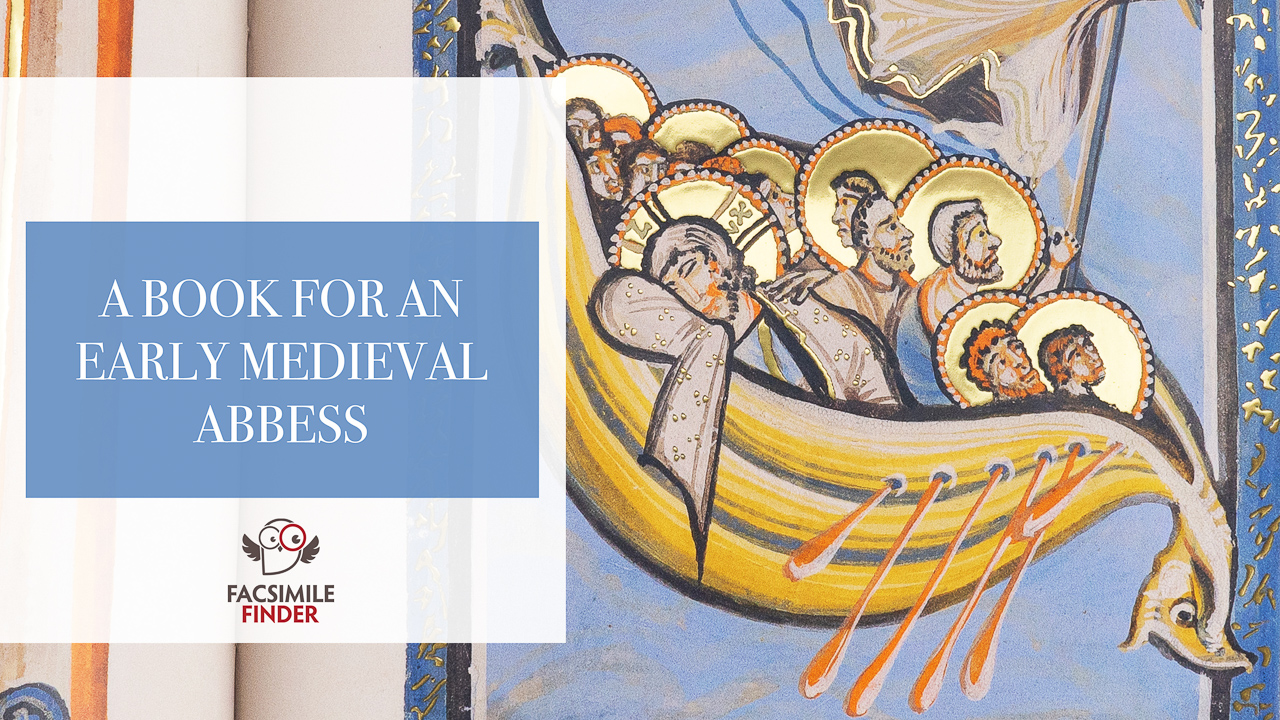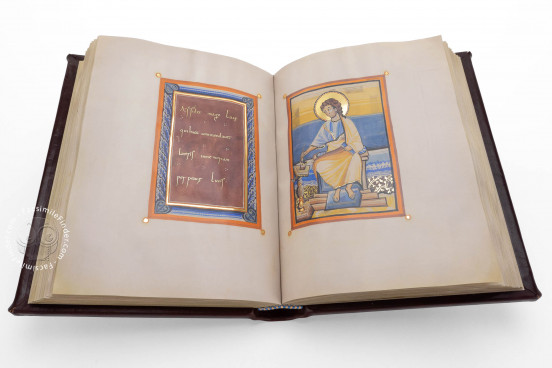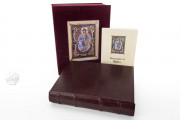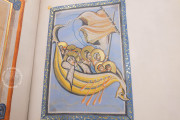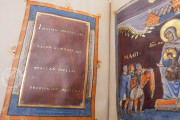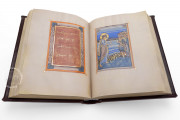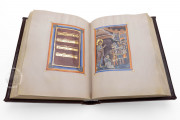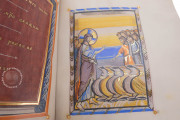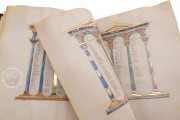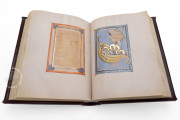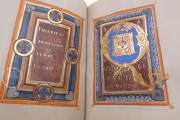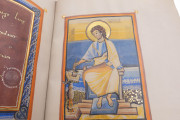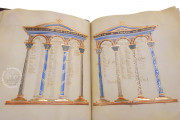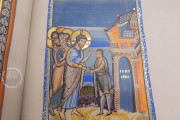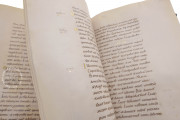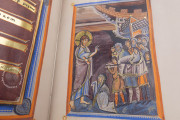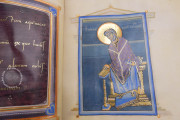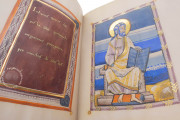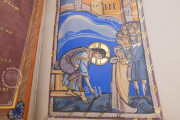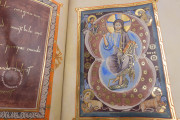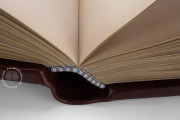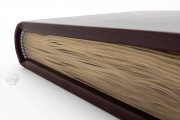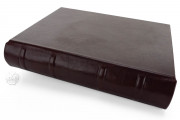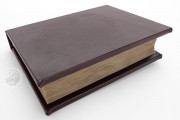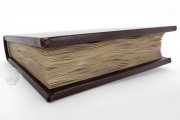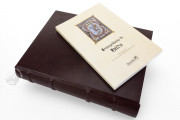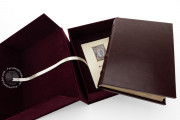A masterpiece of manuscript production in Cologne in the Ottonian era, the Hitda Codex is a Christian Gospel book with twenty-two full-page miniatures rich in detail and painterly drama. The sumptuous book was produced around 1000-1020. Its extensive series of images of the life of Christ paired with monumental full-page framed moralizing inscriptions is unique in the history of manuscript art.
The book presents the four Gospel accounts of the life of Christ, preceded by a series of explanatory prefaces and canon tables and followed by a capitulary. The miniatures include a dedication image depicting the patron, Abbess Hitda of Meschede, presenting the book to Saint Walburga (fol. 6r), Christ in Majesty (fol. 7r), and portraits of Saint Jerome and the four evangelists (fols. 8r, 24r, 78r, 118r, and 172r).
An Unusual Palette
The miniatures and the imposing framed text pages that face them are painted in a palette dominated by blues and purples. The holy figures have enormous gold halos. Isolated details in warm colors contribute to the intense dramatic quality of many of the scenes.
Flashes of Gold
Most of the writing on the painted titulus pages and many details of architecture and embellishments of robes are in gold that shimmers as the book's pages are turned. The flashing light of those turning pages is complemented by a detail of many of the miniatures suggesting its ultimate source for the Christian faithful: the Latin word LUX ("light") inscribed in Christ's halo.
Emphasis on Healing Miracles
The scenes from the life of Christ are arranged in four groups before the Gospel texts, except for the Crucifixion, which follows John's Gospel (fol. 207v). The series opens with four infancy scenes in chronological order (before Matthew's Gospel) and continues with ten scenes from Christ's ministry, most depicting Christ performing miraculous cures.
A Book for Women
The theme of women and their relationship to the divine is central to the book's pictorial program. The dedication image focuses on an exchange between two women, an eleventh-century abbess and the eighth-century missionary saint to whom her convent—pictured behind them—was dedicated (fol. 6r).
The manuscript is extraordinary for the frequent inclusion of female figures in the scenes from the life of Christ. The Virgin Mary appears often, as might be expected, especially in the infancy scenes. Less familiar women—Saint Peter's mother-in-law (fol. 77r), a widow whose son Christ raises from the dead (fol. 115r), and an adulterous woman (fol. 171r)—play roles in the miracle scenes.
An Exquisite Example of Caroline Minuscule
The script of the manuscript's text is an outstanding example of late Caroline Minuscule. The script of most of the framed moralizing inscriptions that face the miniatures is also Caroline but with the ascenders and descenders elongated in imitation of documentary script. This feature both serves to embellish the text and emphasizes the importance of the messages. Others are written in display capital letters.
Virtues Personified
The text of each Gospel is introduced not only by miniatures but also by a framed incipit page with the opening letter or letters as large interlace initials with the following letters in gold display script. The opening page for Matthew's Gospel includes portrait busts of personifications of the four cardinal virtues of Prudence, Fortitude, Justice, and Temperance (fol. 25r). The incipit page for John includes a representation of the Lamb of God and portrait busts of Faith, Hope, Charity, and Humility (fol. 173r).
From a Princely Court Library
At the dissolution of the monasteries in 1803, the manuscript was in the library of the Premonstratensian monastery of Saint Lawrence at Wedinghausen. From there, it entered the library of Landgrave Ludwig X, later Ludwig I (1753-1830), Grand Duke of Hesse-Darmstadt. The court library became the Hof- und Landesbibliothek in 1917, and then the Hessische Landesbibliothek in 1920. That library merged with the library of the Technische Universität in 1948 to become the Universitäts- und Landesbibliothek Darmstadt.
We have 2 facsimiles of the manuscript "Hitda Codex":
- Evangeliario di Hitda facsimile edition published by Imago, 2023
- Darmstädter Hitda-Codex facsimile edition published by Propyläen Verlag, 1968

